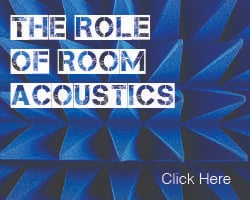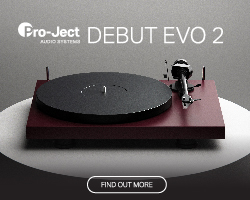I hadn’t planned to review this cable at all, but one was supplied by David Brook at Mains Cables R Us (MCRU) as  part of the package with the excellent LongDog Audio VDt1 DAC that I reviewed a while ago. Swapping out this mains cable and adding one of my own favourites produced an unexpected diminishment in sound quality. “Hmm”, I thought, “interesting”.
part of the package with the excellent LongDog Audio VDt1 DAC that I reviewed a while ago. Swapping out this mains cable and adding one of my own favourites produced an unexpected diminishment in sound quality. “Hmm”, I thought, “interesting”.
Solidity and control, dynamics and resolution, clarity and precision. All seemed to benefit from this cable on the LDA DAC.
At £95 or so for a 1.5m length, reasonably flexible and looking very well made and presented, this cable is by no means expensive as such things go.
It’s available in any configuration of plugs you care to think of, including high current, Schuko, Figure-8, UK 3-pin, US 2-pin etc ….
Technicalities
Three 2 sq mm conductors made from silver-coated 99.9999% OFC (oxygen free copper) are used to carry the current. The dielectric covering is extruded Teflon and the conductors are given a rotational twist to improve RFI rejection.
A cotton filler reduces microphony and bolsters the internal strength of the cable and a paper wrap is used to secure the construction prior to the application of the flexible PVC jacket.
The moulded IEC and mains plugs are designed and made by Isotek, and the solid copper conducting components are coated in 24ct gold.
Comparisons
Ah, the ‘sound’ of mains cables. One of the more contentious issues in hifi!
How can mains cables affect the sound of a component? – I have no idea, but experience demands me to accept that they do andI could list a discouragingly large number of mains cables that spoil a component’s sound for me.
I tend to keep several brands, each with their own sonic characteristics that suit some components but that do not necessarily synergise with others.
Here’s a comparison between the Isotek cable and a couple of my established favourites ….
Nordost Magus (re-branded as Blue Heaven at around £150 for 1m) has been one of my ‘keeper’ mains cables for quite a while. As well as looking great with its lovely deep blue outer sheath, it also performs admirably sonically! It has a slightly relaxed but fluid take on the music; there’s a natural flow and tonal richness that is very appealing.In comparison to the Isotek, though, it seems a bit too laid back, less tonally neutral and missing out on some of the excitement, boldness and solidity of more rhythmically propelled music.
The Isotek EVO3 Premier sounded closest to my old MusicWorks mains cable, the latest version of which retails at around £350 for a 1.8m length.Similarly controlled and dynamic, it was actually quite difficult to tell them apart on small to medium scale music.When the music really gets going, though, and with higher powered amps like my 250wpc Krell, the benefits of the more expensive cable can be heard as a further expansion of dynamic freedom and heft.With a lower powered amp like a Topping TP-60 27wpc t-amp, or with low powered source components, differences of this kind were marginal at best.
Summary
All 3 of the power cables mentioned here are fine examples of the cable maker’s art, and I would happily commend any and all of them to you.The Nordost has a bit more ‘flavour’, and that may suit your system or preferences.The MusicWorks is similarly neutral, defined and explicit as the Isotek, and is capable of taking a high powered amplifier’s dynamic freedom even further – but it also costs several times as much!
So, the Isotek EVO3 Premier power cable is a bit of a no-brainer as far as I am concerned – the benefits of high end power cable design, but without the high price. Recommended!
______
Review system:
Speakers: MBL 116F, Dynaudio Excite X14, Waterfall Audio Victoria Evo Power Amps: Atoll AM-80, Topping TP-60 and Krell KAV-250a
Pre-amp: Restek Consens
Source: Vincent CD S7 CD Player.
Signal cables: RFC Pluto & Oscar’s Audio Dark Knight i/c and Tellurium Q Black speaker cables.
Mains cables: Nordost Magus, MusicWorks
Author – Jerry Jacobs
















































































































































































































You must be logged in to leave a reply.